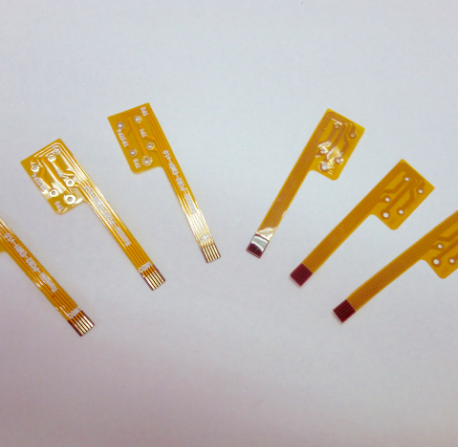Testing method of flexible circuit board pressing auxiliary material
Silicon aluminum foil auxiliary material test:
Appearance inspection: smooth and clean surface, no cracks, cracks, particles, bubbles, pinholes and foreign impurities.
Thickness: Micrometer measurement, take five points for measurement, read the data and record.
Size: Measure with a ruler or tape measure, take two equal sides to measure, read the data and record.
Temperature resistance: The silicon aluminum foil is continuously heated for temperature resistance test (temperature: 185°C; pre-pressing: 10S; molding time: 120S; pressure 100kg/cm2 for continuous operation for 5-7 days), no brittleness is allowed.
Silicone oil precipitation: the silicon-aluminum foil is continuously heated for temperature resistance test (temperature: 185 degree Celsius; pre-press: 10S; molding time: 120S; pressure 100kg/cm2 for continuous operation for 5-7 days), do not allow silicon-aluminum foil silicon oil to separate.
Glass fiber cloth auxiliary material test:
Appearance inspection: The surface is smooth and clean, without wrinkles, cracks, particles and foreign impurities.
Thickness: Micrometer measurement, take five points for measurement, read the data and record.
Size: Measure with a ruler or tape measure, take two equal sides to measure, read the data and record.
Temperature resistance: The glass fiber cloth is heated continuously for temperature resistance test (temperature: 185 degree Celsius; pre-pressing: 10S; molding time: 120S; pressure 100kg/cm2 for continuous operation for 5-7 days), no brittleness is allowed.

Burned iron plate auxiliary material test:
Appearance inspection: smooth and clean surface, no cracks, cracks, particles, bubbles, pinholes and foreign impurities.
Thickness: Micrometer measurement, take five points for measurement, read the data and record.
Size: Measure with a ruler or tape measure, take two equal sides to measure, read the data and record.
Temperature resistance: The burnt iron plate is heated continuously for temperature resistance test (temperature: 185 degree Celsius; pre-compression: 10S; molding time: 120S; pressure 100kg/cm2 for continuous operation for 5-7 days), no brittleness is allowed.
Silicone oil precipitation: continuous heating of the burning iron plate for temperature resistance test (temperature: 185 degree Celsius; pre-compression: 10S; molding time: 120S; pressure 100kg/cm2 continuous operation for 5-7 days), burning iron plate silicone oil is not allowed Precipitate out.
Green silica gel auxiliary material test:
Appearance inspection: smooth and clean surface, no cracks, cracks, particles, bubbles, pinholes and foreign impurities.
Thickness: Micrometer measurement, take five points for measurement, read the data and record.
Size: Measure with a ruler or tape measure, take two equal sides to measure, read the data and record.
Temperature resistance: The green silica gel is continuously heated for temperature resistance test (temperature: 185 degree Celsius; pre-pressing: 10S; molding time: 120S; pressure 100kg/cm2 for continuous operation for 5-7 days), no brittleness is allowed.
Silicone oil precipitation: continuous heating of the green silica gel for temperature resistance test (temperature: 185 degree Celsius; pre-compression: 10S; during molding
Room: 120S; pressure 100kg/cm2 continuous operation for 5-7 days), do not allow the precipitation of green silicone oil.
TPX auxiliary material test:
Appearance inspection: The surface is smooth and clean, without wrinkles, cracks, particles and foreign impurities.
Thickness: Micrometer measurement, take five points for measurement, read the data and record.
Size: Measure with a ruler or tape measure, take two equal sides to measure, read the data and record.
Temperature resistance: TPX is continuously heated for temperature resistance test (temperature: 200°C; pre-pressure: 10S; molding time: 180S; pressure 120kg/cm2 for continuous operation 10-20 times), no brittleness is allowed.
Silicone oil precipitation: press the copper foil with the sample TPX (temperature: 180 degree Celsius; preheating time: 10S; molding time: 180S; pressure: 100kg/cm2), press continuously for 10 to 20 times and then go through pretreatment for plating For nickel test, use a 10x magnifying glass to observe after nickel plating, and no copper exposure is allowed.
Auxiliary material test of release film:
Appearance inspection: smooth and clean surface, no cracks, cracks, particles, bubbles, pinholes and foreign impurities.
Thickness: Micrometer measurement, take five points for measurement, read the data and record.
Size: Measure with a ruler or tape measure, take two equal sides to measure, read the data and record.
Temperature resistance: The release film is continuously heated for temperature resistance test (temperature: 200°C; preload: 10S; molding time: 180S; pressure 120kg/cm2 for continuous operation for 5 to 10 times), no brittleness is allowed.
Silicone oil precipitation: press the copper foil with the sample delivery release film (temperature: 180 degree Celsius; preheating time: 10S; molding time: 180S; pressure: 100kg/cm2), press and bond continuously for 3 to 5 times before pre-treatment Carry out the nickel plating test, use a 10x magnifying glass to observe after nickel plating, and no copper exposure is allowed.
High temperature resistant tape auxiliary material test:
Appearance inspection: smooth and clean surface, no cracks, cracks, particles, bubbles, pinholes and foreign impurities.
Thickness: Micrometer measurement, take five points for measurement, read the data and record.
Size: Measure with a ruler or tape measure, take two equal sides to measure, read the data and record.
Temperature resistance: The high temperature resistance tape is continuously heated for temperature resistance test (temperature: 200°C; pre-pressing: 10S; molding time: 180S; pressure 120kg/cm2 for continuous operation for 10-20 times), no brittleness is allowed.
ipcb is a high-precision, high-quality PCB manufacturer, such as: isola 370hr PCB, high-frequency PCB, high-speed PCB, ic substrate, ic test board, impedance PCB, HDI PCB, Rigid-Flex PCB, buried blind PCB, advanced PCB,microwave PCB, telfon PCB and other ipcb are good at PCB manufacturing.